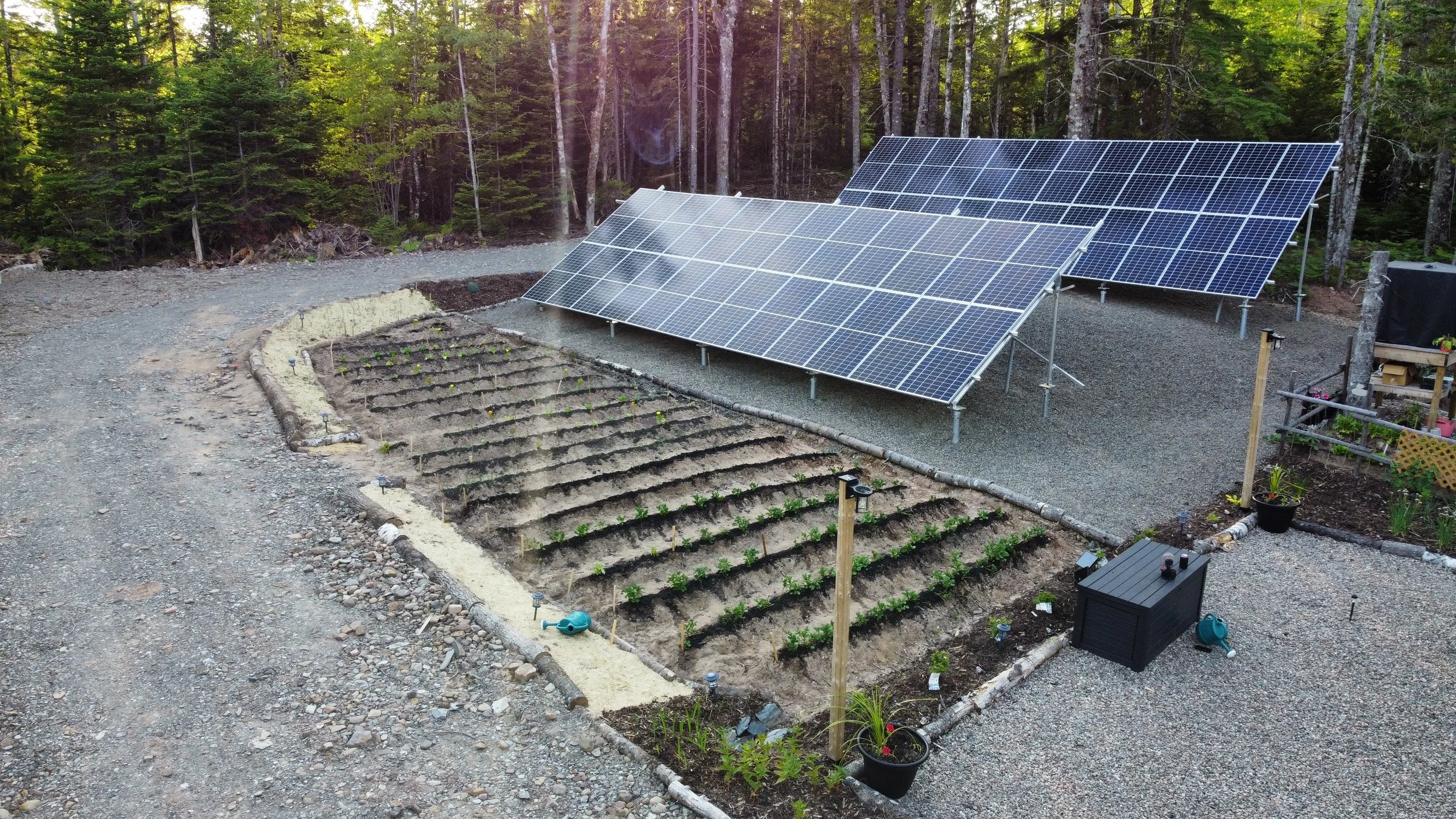
UTILITIES
Being off-grid means providing all our own utilities. From the start of this project, we’ve been on a mission to prove that living off-grid no longer means you have to sacrifice a modern lifestyle and comfort. As a two-person team, it’s slow going, but once complete we will be able to provide our own electricity, drinking water, and dispose of waste water.
-
Creating Electricity
Every thing powered by electricity is generated by our 20 kilowatt-hour solar array. Comprised of 48 430 KWH solar panels, this array faces south to catch as much sun as possible. Although both are facing south, the back row is angled differently than the front row to maximize winter sun, when the days are shorter and sun sits lower in the sky.
Storing Electricity
Once the panels capture solar energy, it travels underground to the heart of The Land, the Power Building. This is where 12 Battleborn 270Ah Gamechanger batteries store a total of 3240 Ah (810Ah at 48V).
Using Electricity
Once we’re ready to use power, the inverters convert the DC power from the batteries into useable AC power. It then goes through the network of conduit we installed under the driveways to the house and dome.
-
Drinking Water
Our 260’ deep water has a fill rate of 4.5 gallons per minute, in addition to storing 288 gallons of fresh water ready for our taps, drinking, and watering the plants. To protect from potential contaminants, all water goes through our filtration system to remove hardness, iron, manganese and another other potentially harmful substances. Once safe to use, it travels to the house, dome, and eventually greenhouse through the 800’ of waterlines we’ve installed by hand at 4’ deep to avoid winter freeze.
Waste Water
Typical on-site sewage systems require large areas to be excavated to allow for a leaching field (the area where water returns to the earth). Going with a sustainable bio-filtration system we were able to tuck our system nicely in the woods and protect many trees from being removed.
Ground Water
Trying to build a functioning homestead on a hill has definitely presented some challenges when it comes to ground water from rain and snow melt. By installing over 250’ of drainage pipes, culverts, and french drains we’ve been able to control and collect the water either saving it in our 30,500 pond for watering gardens, as well as serving as a reservoir for fire protection. When the pond is full, and surplus is returned to the forest through a controlled drain.
-
Trenches Dug:
1,600 feet
Pipe Installed by Hand:
2,190 feet of conduit
800 feet of waterline
Solar panels that supply 100% of our electric needs.
Battery storage and inverter system
Water filter system
Electrical conduit during install.
Waterline during install.
Our on-site waste water system.
Culvert for rain and snow melt run off.
Drainage for rain and snow melt run off.







